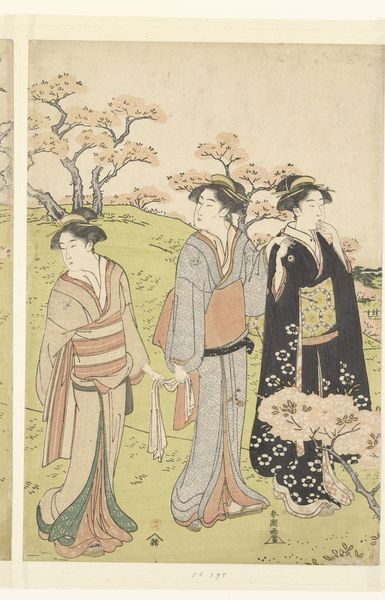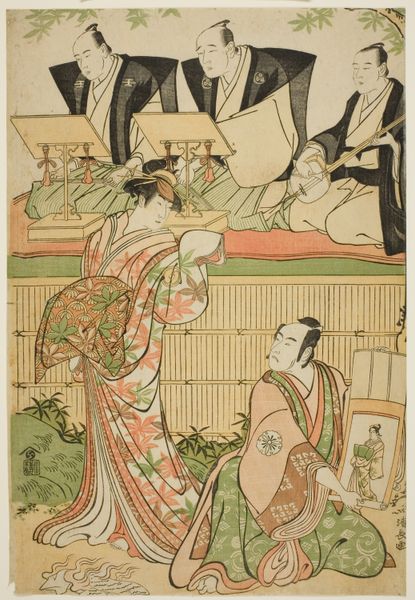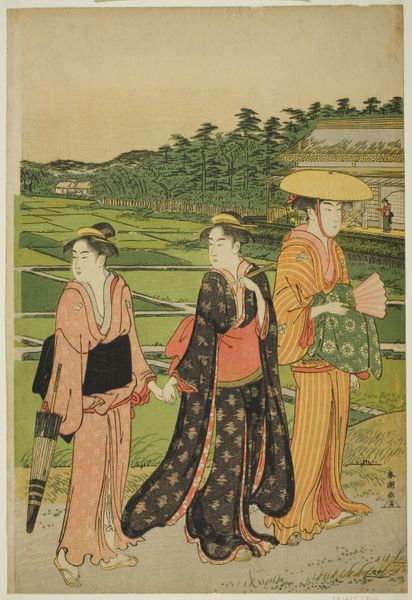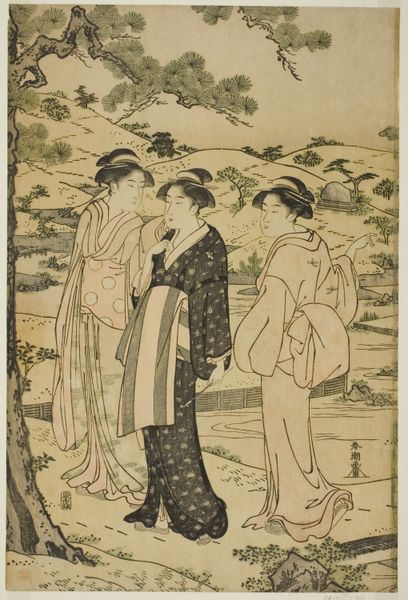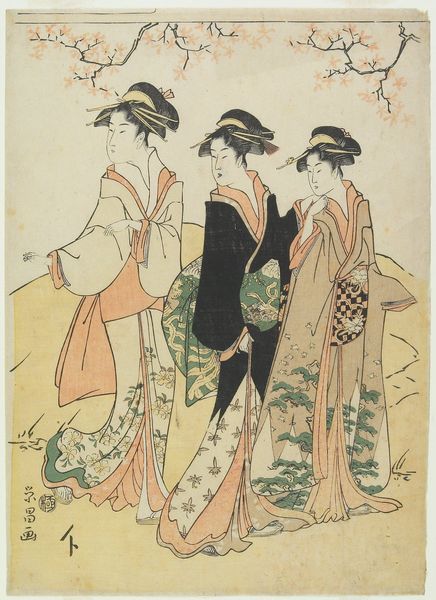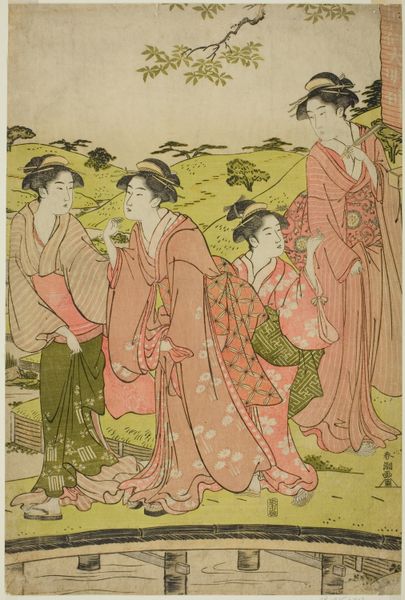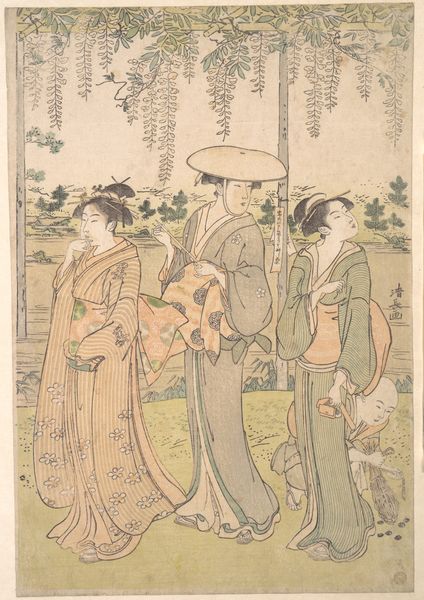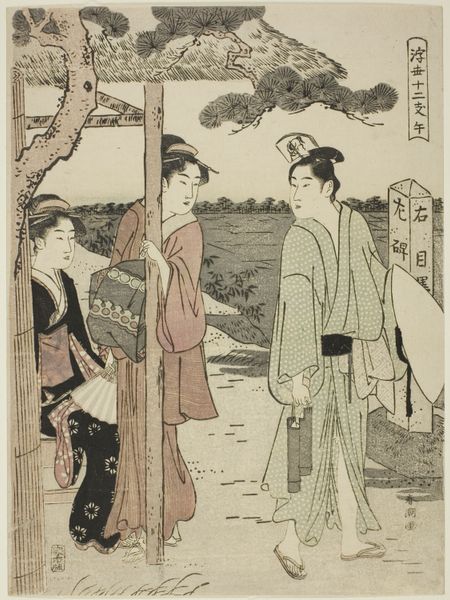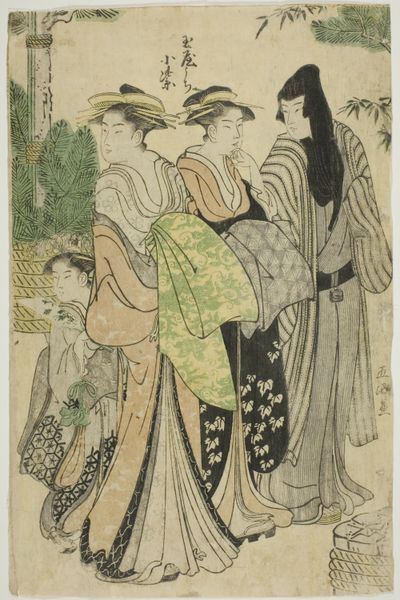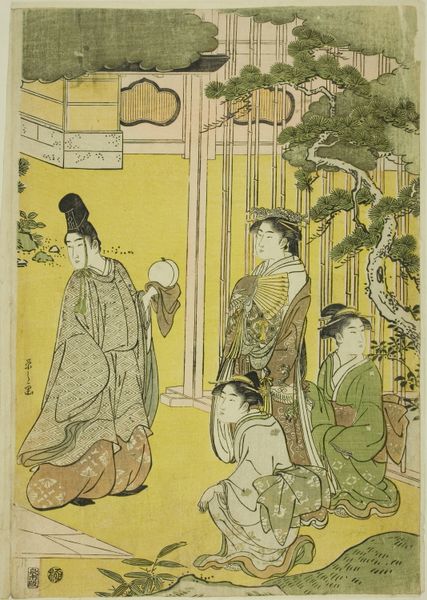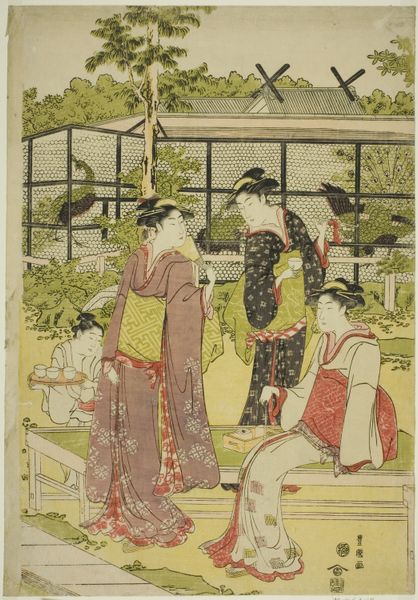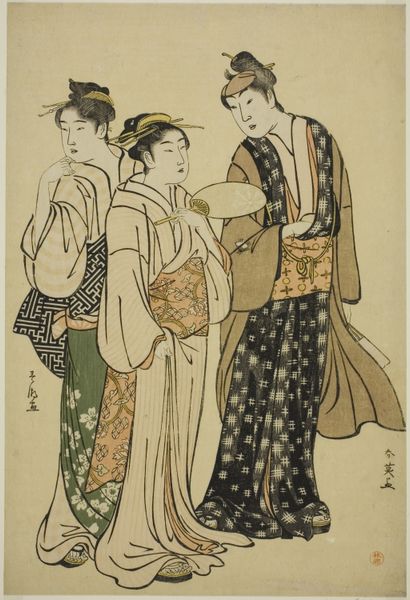
print, woodblock-print
#
portrait
# print
#
asian-art
#
landscape
#
ukiyo-e
#
woodblock-print
#
genre-painting
Dimensions: 38.1 × 25.5 cm (15 × 10 in.)
Copyright: Public Domain
Curator: Immediately, the scene feels like a captured breath. There's a stillness despite the figures in motion, an almost ethereal quality. Editor: Indeed. We're looking at "Benten Shrine in Shinobazu Pond," a woodblock print dating to the late 1780s, attributed to Katsukawa Shunsho. It now resides here at the Art Institute of Chicago. The image itself offers a fascinating lens into the late Edo period. Curator: The women, especially, intrigue me. Their garments speak volumes about social roles and aspirations. What does Benten shrine contribute to this cultural milieu? Editor: Benten is associated with music, eloquence, wealth, and femininity. Placing the figures at a shrine devoted to this deity infuses the work with auspicious overtones, particularly important in the flourishing pleasure quarters of Edo. It seems more like a painting showing the access of women in that moment and era. Curator: Notice how the artist uses the negative space—that vast, almost blank expanse above the figures. This heightens the feeling of a fleeting moment, of observation. Editor: Certainly. The figures become foregrounded—asserting the central roles these women take. You have to think how, when and where this type of painting would have been displayed. This tells a whole history of social practices. Curator: I'm captivated by the details in their clothing – the patterns, the folds, the way they suggest movement. What meanings can be associated to these garments. Editor: Garment-art reflects status and identity through the patterns and ornamentation which is deeply woven into Japan's cultural history. Looking at them, the clothing tells about stories related to self expression and social dynamics of Edo-era Japan. It is remarkable how they portray this with fine detail. Curator: Looking at it now, I think this work embodies an incredibly human moment; one filled with promise and joy but one that can be forgotten quickly, so being remembered now due to the artwork. Editor: Yes, I find myself pondering about its role not only within the history of artistic practice but about the access to female portrayal within Japanese culture that we see here. I am curious to research further, the stories represented within their clothing.
Comments
No comments
Be the first to comment and join the conversation on the ultimate creative platform.
